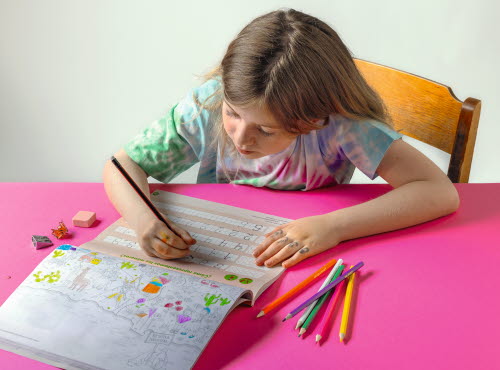“Paper has a physical property that makes the text stand still. This supports reading comprehension, in particular for longer linear texts, as experiments from various studies show.”
Digital learning materials are playing an increasingly important role in education. With smartboards, tablets and laptops – like most things in our lives, classrooms are now digitalised, and, for a variety of reasons, printed books are increasingly overshadowed by screens. Digital learning materials can be updated to stay current, be adapted to different students’ abilities, or motivate students with films and interactive tasks.
The digitalisation of schools also means a change in the publishing industry. The European Educational Publishers Group (EEPG) is seeing an increase in digital materials in all European countries, “from simple PDFs to more sophisticated programmes,” says Helga Holtkamp, director of the EEPG in Berlin.
Digitalisation trend in the beginning or the end?
According to OECD surveys, schools in Scandinavia have the highest level of digitalisation in Europe. At the other end are Greece and Georgia, but also wealthy Germany. The latter, perhaps most surprising, is due to large differences between schools and regions because of the country’s federal school system.
“Not every pupil gets their own tablet. However, we are relatively well equipped and work with a digital platform to send and receive assignments from our pupils,” says Vera Simon, a secondary school teacher in Hamburg.
Elsewhere however, the situation is different, and far from all German schools have Wi-Fi. EEPG nevertheless still expects a “Scandinavian” development across Europe, and within 10 years, digital media is likely to be their members’ main source of income in most countries.
In other words, the days of pencil and paper at school are coming to an end. Or are they? Not necessarily, if a political initiative advocating more printed books in Swedish schools is anything to go by. This year, the Swedish government is setting aside SEK 685 million for schools to purchase printed textbooks.
The strength of paper
So, what lies behind this development in what is otherwise one of the most digitalised countries in the world? If you ask the 130 researchers who signed the Stavanger Declaration, the answer is easy: in some cases, print media has several advantages over digital screens.
“Paper has a physical property that makes the text stand still. This supports reading comprehension, in particular for longer linear texts, as experiments from various studies show,” says Anne Mangen, professor at the Reading Centre, University of Stavanger in Norway.
In addition to her research on the effects of digitalisation, she was also a driving force behind the Stavanger Declaration. This initiative brought together the results of several years of research on reading on a screen within the Evolution of Reading in the Age of Digitisation European network. Its conclusion is that for longer informational texts and deeper reading comprehension, paper is superior.
“A meta-study of 54 studies totalling more than 1,700,000 participants shows that comprehension of long informational texts is better when reading on paper than on a screen, especially when the reader is under time pressure,” the declaration states.
Screens tend to make us skim
The reason for this is largely down to the format. With shorter texts, where it is possible to see the content in its entirety on the screen, negative effects, such as diminished comprehension and the tendency to skim read are less likely to occur.
But getting through a long text involves a lot of scrolling, which reduces the reader’s focus on the content. Studies have also shown that screens make us overestimate our ability to understand the text and therefore we tend to skim through it.
“You only see one page at a time. In a printed textbook, a text appears as a part, for instance, a chapter, in a whole. That context provides anchoring and support for the cognitive processes entailed in comprehension, and it has both a visual and a material property,” says Mangen.
The research also shows differences when it comes to underlining and highlighting text digitally compared to on paper. There is obviously something about that connection to the brain between hand-pencil-paper. “And if you go back to read the text again, you have traces of an activity that reflects a cognitive process differently than if you did it digitally,” says professor Anne Mangen.

This text is an excerpt from the text "A valuable lesson" in PAPER 6, by Carl Undehn, edited by Linda Åslund. Images by: Jann Lipka.

